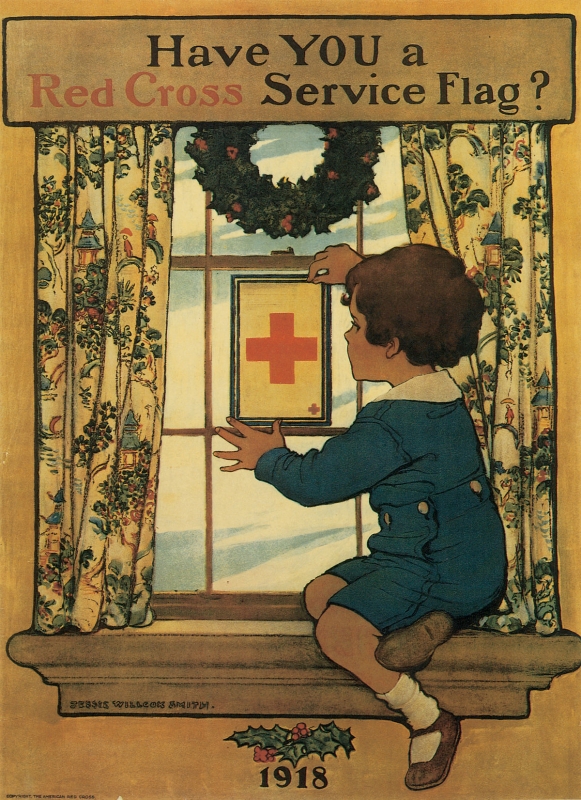Red Cross Medals of World War I
World War I inspired a fascinating array of medallic art and popular subject was the Red Cross – a worldwide organization that played a critical humanitarian role in the war and is still relevant today. These medals were created to commemorate and raise funds for the Red Cross during and after the war. “Trenches to Treaties: World War I in Remembrance” showcases many of these beautiful pieces of art.
The International Committee of the Red Cross
The concept for the Red Cross was created in 1859 at the Battle of Solferino during the War of Italian Unification. Swiss businessman Henry Dunant witnessed 40,000 dead and wounded men on the battlefield without medical attention. He proposed an agency to provide humanitarian aid during wartime and an international treaty recognizing the neutrality of the agency.
The agency became the International Committee of the Red Cross (ICRC) in 1863. Its emblem was a red cross on a white background, the inverse of the Swiss flag. A year later the first Geneva Convention was adopted initially by 12 nations, codifying acceptable treatment of sick and wounded soldiers. Dunant was awarded the first Nobel Peace Prize in 1901 for these accomplishments.
The ICRC encouraged the creation of national Red Cross societies, today known as the International Federation of Red Cross and Red Crescent Societies. These organizations were independent from the ICRC, which acted as a liaison between the societies. During World War I the ICRC expanded from ten employees to over 3,000 and organized itself into national bureaus for each combatant nation.
Red Cross efforts were invaluable during World War I. The ICRC established the International Prisoners-of-War Agency that was responsible for arranging the exchange of over 200,000 POWs, gathering records on millions of prisoners, and transferring mail, money and aid packages. Records gathered enabled over two million POWs to be reunited with their displaced families. Red Cross delegates were sent to inspect 524 POW camps during the war. National societies deployed thousands of nurses from around the world to help deal with the unprecedented number of casualties.
The ICRC was also charged with monitoring combatant nations’ compliance with the Geneva conventions. It was a leader in protest over the use of chemical weapons and was instrumental in having their use banned after the war. For its work, the ICRC was awarded the 1917 Nobel Peace Prize – the only one awarded during World War I.
The American Red Cross
Clara Barton, famous for her pioneering efforts to improve nursing during the American Civil War, became aware of the ICRC while visiting Europe. She and a group of associates founded the American Red Cross in 1881. The organization is dedicated to helping people in need throughout the country and world. It received congressional charters in 1900 and 1905.
The American Red Cross experienced tremendous growth during World War I – from 17,000 members in 1914 to over 20 million adult and 11 million junior members in 1918, organized in 3,864 chapters. Americans contributed $400 million in funds and material to support Red Cross programs such as staffing hospitals and ambulance companies, and recruiting 20,000 nurses to serve in the military.
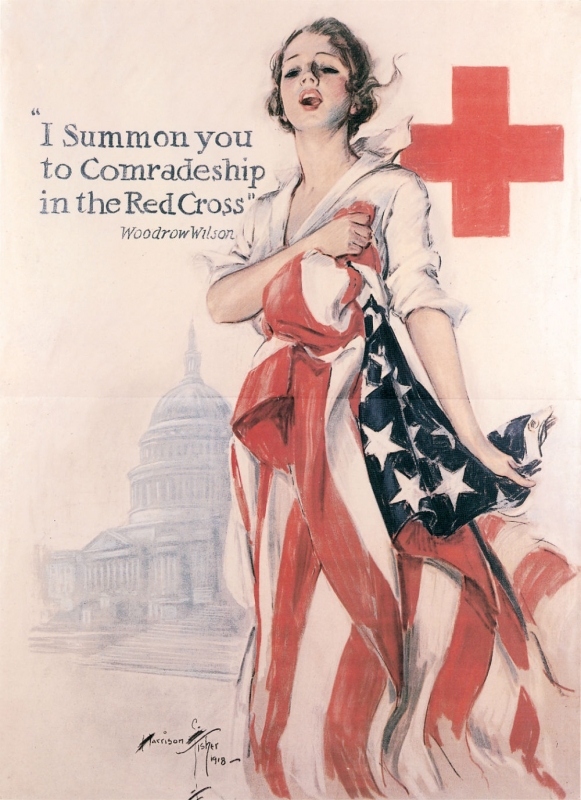
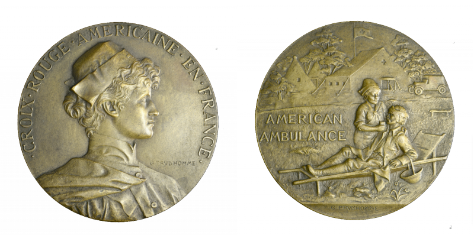
(American Red Cross in France medal 1920)
France, American Red Cross in France medal, ca. 1920, bronze, by Georges Prud’homme.
Obv: American Red Cross nurse facing right; CROIX ROUGE AMERICAINE EN FRANCE (American Red Cross in France).
Rev: Nurse aiding wounded patient on cot in front of a field hospital complex; AMERICAN / AMBULANCE.
Courtesy of Richard Jewell
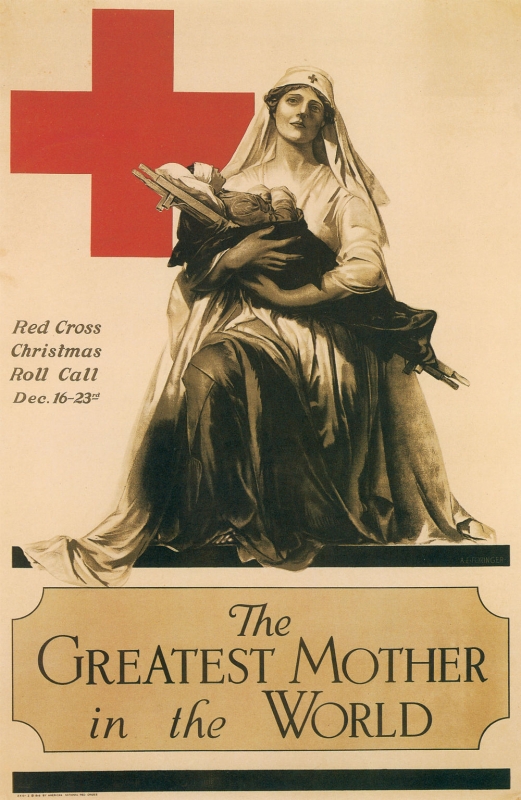
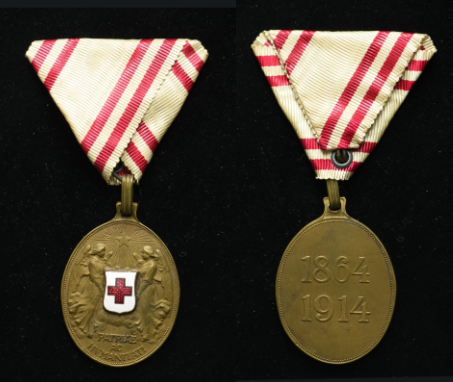
(Red Cross merit medal 1914)
Austria-Hungary, Red Cross merit medal, 1914.
Obv: Two angels hold a white shield bearing the Red Cross emblem, shining star above; PATRIAE / AC / HUMANITATI (country and humanity).
Rev: 1864 / 1914.
ANA# 1987.127.2095
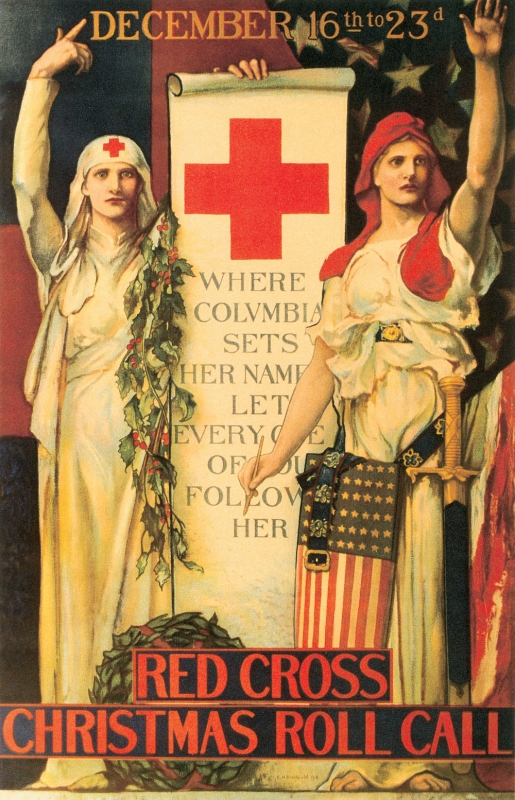
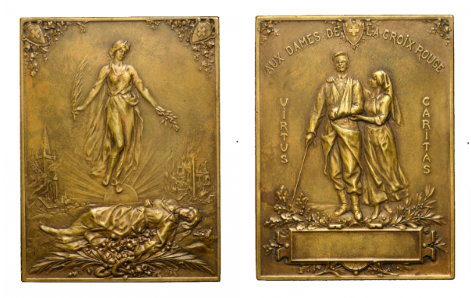
(The Women of the Red Cross medal 1916)
France, The Women of the Red Cross medal, 1916, bronze, by Henri Allouard.
Obv: Angel rising over a dead Red Cross nurse, gun lying by her head dropped by a German soldier as he flees; burning buildings in the background.
Rev: Red Cross nurse helping wounded soldier; AUX DAMES DE LA CROIX ROUGE / VIRTUS / CARITAS (to the women of the Red Cross, virtue, charity).
Courtesy of Richard Jewell
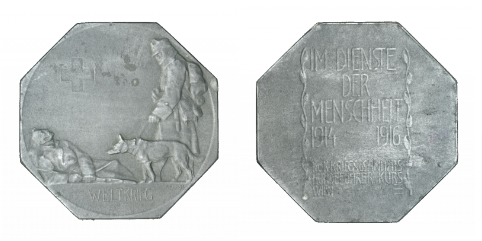
(Austria Red Cross medallion 1916)
Austria-Hungary, Red Cross medallion, 1916.
Obv: Red Cross worker with dog helping fallen soldier; WELTKRIEG (world war).
Rev: IM•DIENSTE / DER / MENSCHHEIT / 1914-1916 (In the service of mankind).
ANA# 1991.110.86
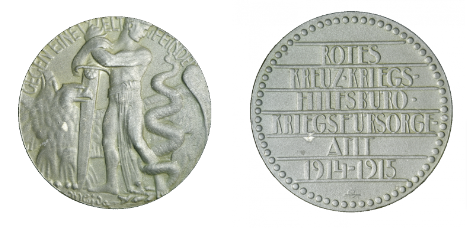
(Austria Red Cross medal 1915)
Austria-Hungary, Austria Red Cross medal, 1915, steel, by Wilhelm Hejda.
Obv: Partially nude warrior standing left holding large sword pointing to the ground, coiled and reared snake at right, eagle at left; GEGEN EINE WELT FREUNDE (friends for a world).
Rev: ROTES / KREUZ•KRIEGS• / HILFSBURO• / KRIEGSFURSORGE• / AMT / 1914-1915 (Red Cross war office war aid office).
ANA# 1980.52.44
